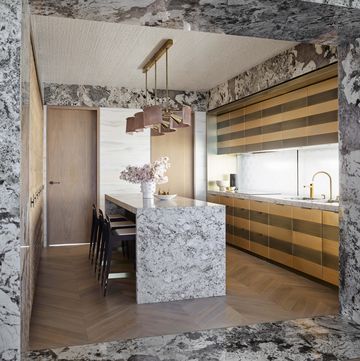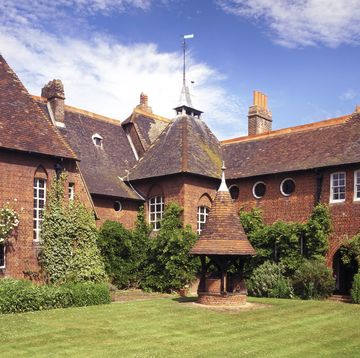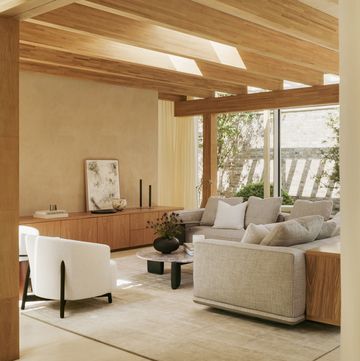In the millennium year, Serpentine’s then-director Dame Julia Peyton-Jones commissioned Dame Zaha Hadid to design a venue for the gallery’s fundraising gala. It was only meant to be for one night, but the crowds came and claimed the pavilion as a piece of public architecture. Permission was given for it to stay in Kensington Gardens for the summer, and so one of the world’s most influential, thought-provoking micro-architecture programmes was born.
Serpentine has commissioned, every year since then, a pavilion by an international architect or artist who has never built in the UK. The opening party is as much a part of the British summer season as Glastonbury or Wimbledon, but the pavilion itself is profoundly democratic. Freely accessible, it serves as a ‘town square’ and an immersive way for all to engage with architecture.
‘It began with Zaha,’ declares Serpentine artistic director Hans Ulrich Obrist, adding, ‘her motto – “there should be no end to experimentation” – became our motto’.
What's everyone reading?
The late Iraqi-British architect’s fearlessly questioning spirit is undoubtedly present in the 2025 pavilion (pictured top), which will be designed by Bangladeshi architect Marina Tabassum and her firm, Marina Tabassum Architects (MTA). Titled ‘A Capsule in Time’, Tabassum’s pavilion opens on 6 June. ‘We’re very excited to work with Marina, whose projects have been an inspiration for many years,’ says Obrist. ‘This will be a pavilion on the move. She will create a structure connected to the earth, a meditative space, but also a space that can change, with smaller and bigger gatherings according to how its elements are combined.’ Serpentine chief executive Bettina Korek adds, ‘built around a mature tree, Tabassum’s design will bring the park inside the pavilion. Its kinetic dimension will also hark back to Rem Koolhaas, Cecil Balmond and Arup’s memorable levitating element, created for 2006’s pavilion.’
The scheme originally gave renowned architects such as Hadid and Oscar Niemeyer the chance to build in the UK for the first time, but for the past 10 years the Serpentine team has used the platform to give a younger generation visibility. ‘Frida Escobedo hadn’t built a major structure outside Mexico,’ notes Obrist. ‘She did the pavilion in 2018, and now she is designing the new version of the Pompidou and a wing at the Met in New York.’
The most successful pavilions have been human in scale and spirit – take Francis Kéré, whose 2017 wooden canopy referenced a tree in his Burkina Faso village that serves as school, hospital and a meeting place for elders. A dining table inspired Lina Ghotmeh’s design of 2023, its detailed timber frame conjuring a spirit of conviviality and a moment of wonder.
This is architecture informed by community and rituals dating back to Stonehenge. Each designer brings something of their vernacular to the project; last year, Mass Studies’ Minsuk Cho placed a version of a Korean ‘madang’ (a courtyard in a traditional house) at the centre of his design, while Frida Escobedo’s pavilion used simple roof tiles to make a lattice-like wall, evoking homes in Mexico City. Similarly, Tabassum’s 2025 design, which consists of four wooden capsules with a translucent façade, was partly inspired by Shamiyana tents – fabric and bamboo structures used in Bengali weddings.
The setting of the historic royal park throws up interesting juxtapositions too. In 2012, Ai Weiwei and Herzog & de Meuron excavated the site where previous iterations had stood, embedding their structure partly below ground level, like an archaeological dig revealing truths in each layer. Permeable walls have let the wind blow through. This was the case with Bjarke Ingels’ 2016 design, which he made by pulling apart extruded fibreglass bricks to create an undulating cliff on one side and a cave-like canyon on the other. In 2011, Peter Zumthor invited nature in, placing a Piet Oudolf-designed garden at the heart of his space. Sometimes there are no walls at all – SANAA’s pavilion in 2009 floated on slender steel pillars, as open to the elements as the park itself.
Many refer playfully to the city. Lina Ghotmeh’s 2023 pavilion, with its umbrella-shaped opening, wryly nodded to the British weather, while Jean Nouvel’s striking scarlet form in 2010 took its cues from London buses, phone boxes and the English rose, and in 2019, Junya Ishigami designed a feather-like slate hill that he described as ‘a blackbird flying in a rainy London sky’.
Recently, social and sustainability goals have become important – values embodied by Tabassum and her award-winning Dhaka-based practice. Known for its focus on climate change and living conditions for marginalised people in the region, MTA has been lauded for its Khudi Baris (‘tiny houses’) – modular structures that can be easily disassembled and moved when necessary. ‘In the Bengal delta, architecture is ephemeral, as dwellings change locations with the rivers shifting courses,’ she says, adding, ‘the transient nature of the commission appears to us as a capsule of memory and time.’
Previous Serpentine pavilions have found permanent sites from downtown Vancouver (Bjarke Ingels, 2016) to Hauser & Wirth in Somerset (Smiljan Radić, 2014) and the Albanian capital Tirana (Sou Fujimoto, 2013). Often, ‘they don’t disappear, they reappear,’ says Obrist, who believes the key to their lasting impressions is that they can be used in so many ways. ‘It is a café, talks are happening, film screenings… and we have Park Nights when artists take over the pavilion.’
The pavilion’s annual return has embedded it in the city’s collective consciousness. ‘It’s like a ritual, people expect it,’ muses Obrist, who believes that the scheme remains as relevant and necessary as ever. ‘We know so many with whom we would like to work that it’s easy to imagine the next 25 years.’ serpentinegalleries.org
















